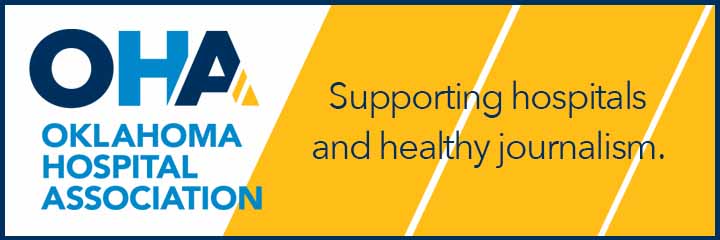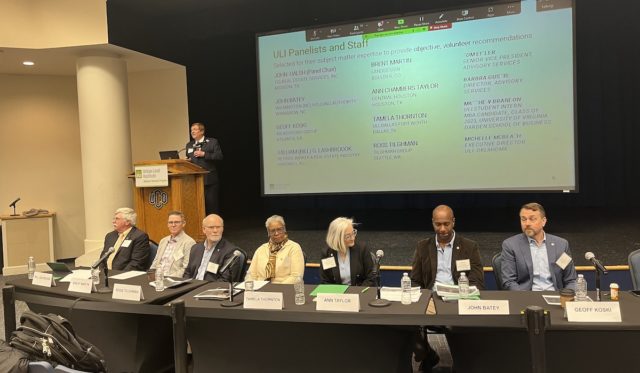
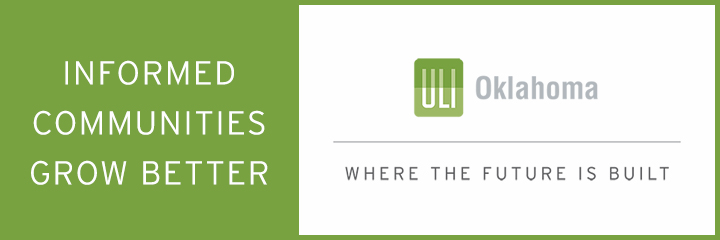
After staying in downtown Edmond and interviewing community stakeholders last week, national members of the Urban Land Institute advised local leaders of future land use options for Edmond’s greater downtown area during a panel presentation Friday at the University of Central Oklahoma.
Among the many topics discussed throughout the presentation, ULI panelists recommended that Edmond close East Main Street between South Broadway Avenue and South Littler Avenue to create “Main Street Square” and place the planned municipal courthouse and parking garage along South Littler Avenue between East First Street and East Main Street. Panelists also recommended constructing a crosswalk from downtown across South Boulevard to connect with UCO.
Another key recommendation from the ULI panel involved implementing various types of housing downtown to attract essential workers.
“We’re asking you, be bold,” Bill Lashbrook, one ULI panelist said. “Think about downtown as a canvas and an opportunity to create something for Edmond that will be the envy of the surrounding towns and bring economic growth into the center. See that opportunity. See the value of those connections. See the value of that larger pull platform.”
The Urban Land Institute is a membership-based organization focused on shaping the future of the built environment for transformative impact in communities worldwide. The Oklahoma chapter was founded in 2007.
‘Make a bigger there’
Brent Martin, a ULI panelist who works as a managing partner with LandDesign in Boulder, Colorado, said creating “Main Street Square” in downtown could give Edmond a focal point for pedestrians to orient themselves in and around town.
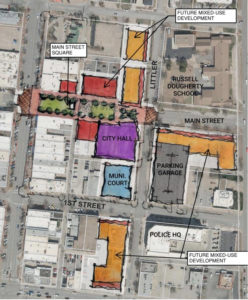
“With this connection to Broadway, the ‘Square’ is a place that can be a respite for retail customers to linger a bit longer, families to let their children eat some ice cream and play and dedicated space for events, concerts and festivals,” Martin said.
If Edmond created a “Main Street Square,” the slated municipal courthouse and parking garage should be placed on South Littler Avenue between East First Street and East Main Street, Martin said.
As the “city center complex” is currently designed, the new City Hall is planned for 28 E. Main St., on the site of the current downtown community center, and the new parking garage is slated to be constructed at the site of the current Edmond planning and public works building, 10 S. Littler Ave.
The new Edmond Municipal Courthouse is planned to be east of the slated parking garage, on the corner of East Main Street and North Boulevard.
“The panel strongly believes that City Hall should have a presence and prominence like no other building in downtown. Through the use of masking, architectural character and urban design techniques, City Hall should anchor Main Street Square and the downtown with its entrance and activated frontage along the ‘Square,'” Martin said. “Once again, this is a building that will last for generations. So, make the most of this opportunity and be bold.”
Asked about the recommendation to close East Main Street and place the “city center complex” on South Littler Avenue, Edmond City Manager Scot Rigby said that city and community stakeholders will have to come to the table.
“We have a unique project right now with the city center complex that provides us an opportunity — a catalytic project,” Rigby said. “So, we’ll have those discussions. I’m not opposed to it. I think there’s a value of having green space.”
‘The growth is coming. It’s not going to stop.’
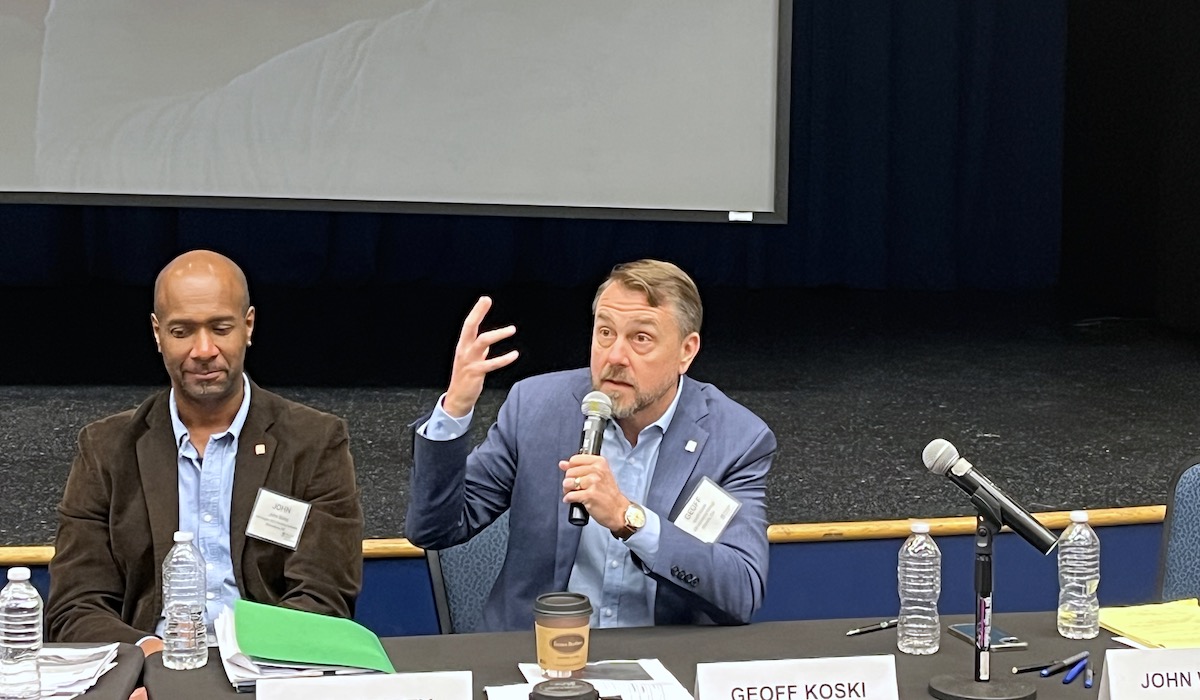
The fastest growing large city in Oklahoma, Edmond is expected to add about 40,000 people over the next 30 years — a growth which Edmond leaders are anticipating.
With this estimated growth, ULI panelist Geoff Koski, who serves as the president of KB Advisory Group in Atlanta, Georgia, recommended the city add housing to meet the population demand.
“By the time we get to 2050, you’re going to be a significantly larger place. The growth is coming. It’s not going to stop. You’re going to add an entire city of Bartlesville, which by the way, is the 13th-largest city in Oklahoma. It’s not nothing,” Koski said. “So where are all these people going to live? That really became an essential piece of our deliberations — the housing. How do you house all of these new people over the next 30 years?”
Koski said the average household size across the United States is decreasing, but about 75 percent of Edmond’s housing stock consists of detached single-family homes.
“That’s the historical tale of suburban growth that you all mastered. However, in today’s world, two thirds of your households are made up of one or two people,” Koski said. “So, what we see is a mismatch. Your housing stock is not matched up with your populace.”
Another ULI panelist, John Batey, the director of affordable housing development for the Wyoming Community Development Authority, recommended the inclusion of higher-density, mixed-use and mixed-income housing in the downtown core to meet the city’s need for essential workers.
“Essential worker housing just makes sense in the downtown core for a number of reasons. The area is already dense, so we already have a collection of smaller lots, more count compact development. Existing income levels in the downtown area are more in line with essential workers in your community,” Batey said. “This essentially says that this is where the housing is needed, because this is where the essential workers are that have been able to be lucky enough to find a housing unit in your community.”
Chapman: ‘We’re a whole lot closer to this vision today than we were four years ago’
Ward 1 Edmond City Councilman David Chapman, who did not file for reelection in 2023, said ULI’s presentation was similar to his 2019 campaign speech.
“Everybody’s come up and told me, ‘Dude, you were just too early,'” Chapman said. “But here’s my prayer: That the work that I did in that four years made it to where we can actually do it now.”
Chapman said he hopes whoever succeeds him in the Ward 1 seat “can take the torch and can be more successful.”
“We’re a whole lot closer to this vision today than we were four years ago. I promise you that,” Chapman said.
On the recommended closure of East Main Street and the proposed relocation of the city center complex, city leaders will have to determine which points of ULI’s presentation they will be able to adopt, Chapman said.
“I think we’ve got to look and see what are those things we could implement,” Chapman said. “Some we may not be able to because we may have already kind of gone down the road.”
(Editor’s note: The Oklahoma chapter of the Urban Land Institute is a financial sponsor of NonDoc’s 2023 municipal debate series.)
Review the ULI panel presentation here
https://nondoc.com/wp-content/uploads/2023/02/2023-ASP-Edmond-OK-Master-v4.pdf” viewer=”google”]
